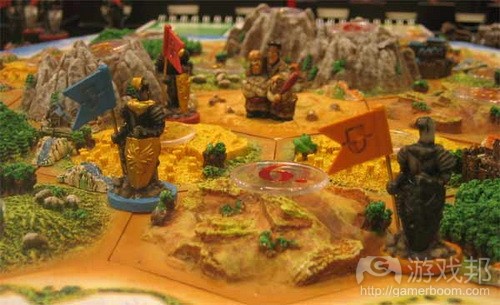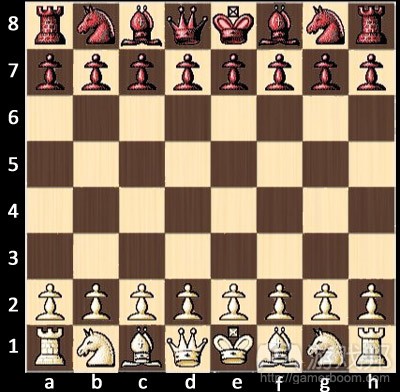游戏设计课程之撰写游戏评论文章(19)
作者:Ian Schreiber
今天我们将把目标转移至游戏评论。为什么我们要关注游戏综述或评论或游戏报道,或其他形式的游戏文章?由于缺乏分析游戏的能力,我们无法就所制作的游戏进行论述,做出相应改善。(请点击此处阅读本系列第1、第2、第3、第4、第5、第6、第7、第8、第9、第10、第11、第12、第13、第14、第15、第16、第17、第18课程内容)
游戏设计师无需变成评论专家(反之亦然),但批判性分析游戏是项重要技能。掌握此技能后,设计师能够通过体验他人的作品学到更多,弄清其中合理与不合理因素(游戏邦注:包括其中原因),将这些经验运用至自己的设计中。从他人失误中吸取教训要比自己亲身经历惨痛教训的代价小很多。
批判性分析
我之前提到的设计师需掌握的一项重要技能是批判性分析他人作品。我觉得自己的游戏设计生涯之所以能够走到今天,一半要归功于我能够体验游戏,提供富有建设性的反馈信息。我给予设计师的帮助让我同他们变成好朋友,我希望你也能够享有这样的机会。
假设你的作品已经“提交”,即便还尚未完工。将其放置一旁,先来检测其他作品。这是个好办法,能够帮你结交新朋友。
这次我们采取的方法不同以往。我们需暂时抛弃自己的设计师身份,让自己转变成游戏评论者。
评价和批评
我们不是很常听到“游戏批评家”这类术语。通常在电子游戏领域中,我们更常看到“游戏评价者”。评价,批评,评价者,批评家。这些是否属于同义词?其区别何在?
就如Costikyan所述,它们的区别在于撰文的目的。简而言之,评价者旨在帮助用户决定买或不买某款游戏。批评家旨在陈述游戏是否具有重要性,是否有价值,或玩家将从中获得什么。由于我们常听到“游戏报道”,我要补充说明的是新闻工作者就是撰写行业新闻的人士。因此撰文论述《卡坦岛》的评论家会这么说:这是款非常棒的游戏,你应该立即购买;批评家会描述其历史重要性,游戏将欧洲游戏带入美国,或者分析游戏机制,陈述游戏如何将玩家的中断时间降至最低,如何平衡运气和技能要素,掳获各类玩家的芳心;新闻工作者会报道某游戏系列新发行的作品,或某家新发行商获得某款游戏的权限,或者某设计师同某知名人士结婚等新闻。
对于游戏设计师来说,评论文章最具重要性,因为评论文章能够直接影响我们当前和未来的设计。
不是所有评论文章都属于此种类型。关于《国际象棋》的反女权主义评论价值就不大(游戏邦注:若你希望设计出引人注目,无社会评论的策略游戏)。但同款游戏的另一评论文章也许谈论的是游戏机构和动态系统,可行及不可行内容,以及这些元素如何融合起来创作出富有持久生命力的作品。这些内容就非常有用。
游戏的批判性分析:过程
首先,登陆course wiki,选择一款游戏(除自己的作品外)。随意浏览其中呈现的项目,起初先查看简要说明和图片,选择一款看起来会富有趣味的作品。不妨采取此举措,即便你从未自己创造过作品。
接着下载组件。确保自己具有充足组件创造游戏。你可以选择制作包含所有信息的应急纸制模型,或者你可以将其打印在简单的纸上。你甚至可以选择遵循内在指示组装自己的高质量版本内容,虽然这需要花费超出你预期的时间和资金。
再来就是阅读规则,然后玩游戏。若机制允许的话,你可以试着独自体验,或者同其他好友共同体验进行最终测试。以设计师角度进行体验,关注游戏结构、动态机制和美学效果。
最后就是回想自己的体验。什么是游戏的外观设计目标?它是否达到这些目标?为什么?游戏机制是什么?游戏体验是什么?二者的关系是什么?你是否发现某些能够利用的策略,或者游戏是否得到合理平衡?你在游戏中进行哪些有趣决策?游戏的核心是什么?
记录这些内容,然后在分析中囊括以下信息:
* 游戏名称及设计师。
* 描述游戏核心机制。你无需复述这些规则,但得描述游戏基本玩法及玩家进行的主要决策,仿佛读者从未玩过这款游戏。
* 描述MDA动态系统和美学效果,描述它们如何从机制中诞生。
* 陈述游戏的设计目标。设计师的目标是什么?然后陈述在你看来游戏是否达到这些目标,为什么。
* 陈述游戏的其他突出内容。
* 最后,若你是这款的设计师,你会如何修改这款游戏?给予明确建议。例如,不要只是说“我要让游戏玩家更具互动性”或“我将修复早前发现的问题”(游戏邦注:而是说明你将如何进行修复)。哪些规则会发生变化,转变成什么样式?你是否会修改游戏目标或价值标准?
记住,你的读者是其他游戏设计师。记录你的分析内容,这样其他设计师就能够从作品的成败经验中吸取教训。你的目标是传递和发现游戏的可行性经验,而非给予新评分。(本文为游戏邦/gamerboom.com编译,拒绝任何不保留版权的转载,如需转载请联系:游戏邦)
Level 19: Game Criticism and Analysis
If you have made it this far and kept up with the course in real time… then you have a strong will, and a lot of free time.
Take a step back and look at what you have done. And realize that this is not the end of your journey, but the beginning.
Today, we switch gears for a bit and turn our attention to game criticism. Why do we care the least about game reviews or critiques or game journalism or any other form of game writing? Because without the ability to analyze a game, we might make games and then be unable to discuss them amongst ourselves, and thus be unable to improve on them.
A game designer does not have to be an expert critic (nor vice versa), but an understanding of how to critically analyze games is a useful skill to have. With this ability, a designer can learn more by playing other people’s games, figuring out what works and what doesn’t (and why), and applying those lessons to their own designs. It’s far cheaper to learn from other people’s mistakes than your own.
Readings / Viewings
Read the following:
•Game Criticism, Why We Need It, and Why Reviews Aren’t It, by Greg Costikyan. I could write at length about the difference between a “game review” and a “game critique” but Greg has already done so, and far more succinctly and clearly than I could.
Critical Analysis
I have mentioned before that an important game design skill to have is the ability to critically analyze other people’s games. I think about half of the reason why I am as far along as I am in my career, personally, is that I have the ability to play a game and offer direct constructive feedback that is useful to another designer. My usefulness to designers makes me friends in a lot of places, and I want you to have the same opportunity.
Consider your own Design Project to be, if not finished, then at least “handed in” (if this were a normal class). Put it aside, and let us examine some other projects. It’s good practice, and it may even make you some friends that extend beyond this course.
This time, we will follow a process that is a bit different than before. We are going to take off our game designer hats for a moment, and put on our game critic hats.
Review and Critique
We don’t hear the words “game critic” very often. Especially with video games, more often we see “game reviewer.” Review. Critique. Reviewer. Critic. Are these synonyms? What is the difference?
As Costikyan points out, the difference is in the purpose of the writing. In short, a reviewer is aiding the consumer in making a buy-or-don’t-buy decision. A critic is writing about a game and why it is or is not important, or valuable, or what have you. Since we often hear the term “game journalism” as well, I would add that a journalist is writing about news in the field. Thus, a reviewer writing about Settlers of Catan might say that it is an excellent game that you should buy right now; a critic might write of its historical importance in bringing Eurogames to the US, or an analysis of its mechanics and how the game deals with minimizing player downtime, balancing luck and skill to make it accessible to all ages, and so on; and a journalist might write about a new game in the series getting released, or a new publisher getting the rights to the game, or the designer getting married to a famous celebrity, if any of those things ever happened.
For game designers, it is critique that is the most important, because critique can directly inform our present and future designs.
Not all critique falls into this category. A critique of Chess as a patriarchal game that pushes an anti-Feminist agenda would not be particularly useful if you’re just trying to design a compelling strategy game, sans social commentary. But another critique of the same game might speak of the mechanics and dynamics, what is effective and what is not, and how it all fits together to make the kind of game that has persisted for centuries. And that would be quite useful, wouldn’t you say?
Critical Analysis of a Game: the Process
First, go to the course wiki and select any one game (other than yours). Feel free to browse the projects that are posted, looking at the brief descriptions and photos at the beginning, and pick one that looks like it might be interesting. Do this even if you did not complete your own project yet.
Next, download the components. There should be enough there for you to build the game. You can make a quick-and-dirty paper prototype that contains all of the information, or you can print it out on simple paper. You can even follow the included instructions to assemble your own high-quality version, although this may take more time and money than you’re willing to spend right now.
Next, read the rules and then play the game. You can try playing on your own if the mechanics allow it, or play with one or more friends if you get them together for one final playtest session. Play as a designer, paying attention to the mechanics, dynamics and aesthetics (in the MDA sense).
Lastly, reflect on your play experience. What were the game’s apparent design goals? Did it succeed at those goals? Why or why not? What were the mechanics? What was the play experience? What is the relationship between the two? Did you find any strategies that were exploitable, or did the game seem well-balanced? What kinds of interesting decisions (and uninteresting ones) were you making throughout the game? What do you feel was the core of the game?
Write this up. Include the following in your analysis:
•Name of the game and its designer (partly to get in the habit of giving credit where due, partly so that if you accidentally post in the wrong place it can be rerouted easily).
•Description of the core mechanics of the game. You do not have to reproduce the rules, but you should describe the basic play of the game and the main decisions players are making, as if the reader had not ever played the game before.
•Describe the MDA dynamics and aesthetics, and show how they emerge from the mechanics (or guess, if you aren’t sure).
•State the game’s design goals. What was the designer trying to do? Then, say whether you feel the game met those goals, and why or why not.
•If there was anything else of note in the game (such as a particular issue with game balance or a unique use of game components), say that.
•Lastly, if you were the designer, what would you change about the game (if anything)? Make specific recommendations. For example, don’t just say “I would make the game more interactive between players” or “I would fix the problem that I identified earlier” – say how you would fix things. What rules would change, and what would they change to? Would you change any game objects or values?
Remember, your audience is other game designers. Write your analysis so that other designers can learn from the mistakes and successes of the game you chose. Your goal is to educate and inform, and to discover new lessons about what makes games work or not work. Your goal is not to give a review score.
Homeplay
Post your critical analysis as a comment on the wiki. Go to the page of the game you chose, and leave a comment. I highly recommend writing out your analysis in something else like a word processor first, and then copying and pasting when you’re done. Do this on or before the end of the course (Sunday, September 6). You will not have any other homeplay this Thursday, so take your time on this and be thorough.
You only need to do this for one game. If you want to provide feedback for more, feel free, but complete your original analysis first to make sure you’ll have enough time to do this for others.(Source:gamedesignconcepts)
上一篇:解析游戏设置与引擎代码的分离问题









































 闽公网安备35020302001549号
闽公网安备35020302001549号